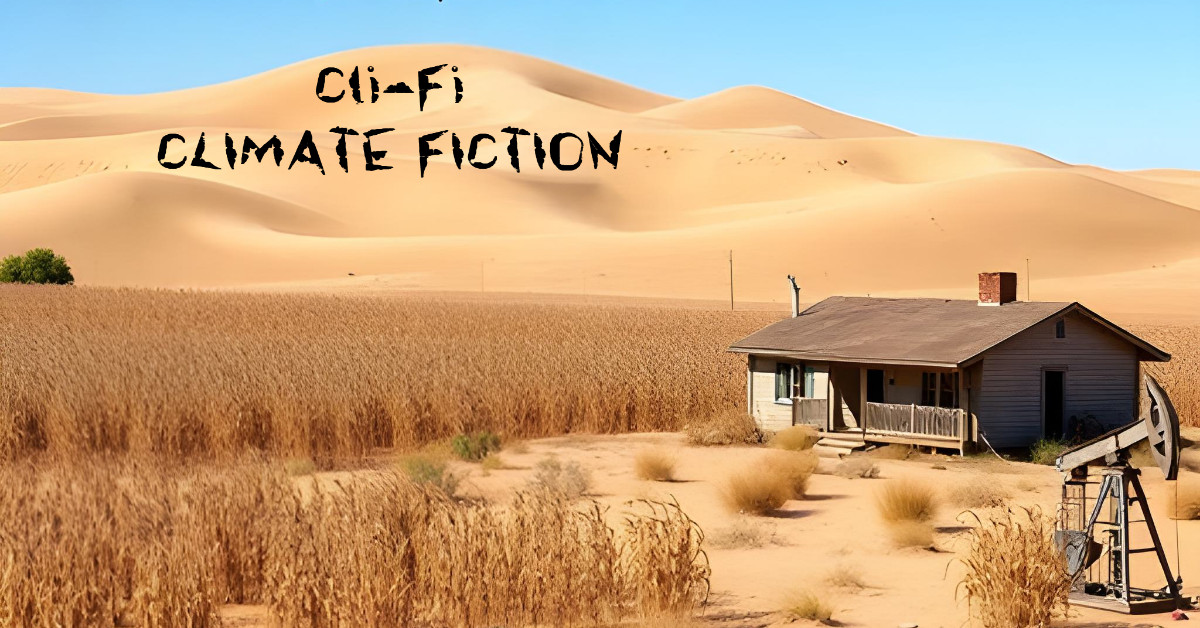Climate fiction, often referred to as “Cli-Fi,” is a genre of literature that focuses on the impacts of climate change and environmental issues. It explores how these changes affect individuals, societies, and the planet as a whole. The genre can encompass a wide range of narratives, from dystopian futures to hopeful visions of resilience and adaptation.
Is This A New Genre?
You might think Cli-Fi is something new, but it started many years ago from writer’s observations that humans can adversely change their environment: like the bad farming practices that led to the great dust bowl of the 1930s, or the extinction of the passenger pigeon by over-hunting, or atomic weapons as seen in the haunting pictures of Hiroshima after atomic bombing.
In the fictional world, the 1960’s Star Trek TV series presented in its origin story that Earth was plagued by wars, poverty, disease, and environmental degradation. Humanity was on the brink of destroying itself, and the Vulcans saved them.
Science Fiction Authors Expand Cli-Fi
Several well-regarded science fiction authors are actively publishing in the Cli-Fi sub-genre, exploring themes related to climate change and environmental issues. Here are some notable authors:
- Kim Stanley Robinson: Known for his detailed and scientifically grounded narratives, Robinson’s works often focus on ecological themes. His novel “The Ministry for the Future” is a prominent example of Cli-Fi.
- Margaret Atwood: While Atwood is best known for her dystopian works like “The Handmaid’s Tale,” her recent novel “Oryx and Crake” and its sequels delve into themes of genetic engineering and environmental collapse.
- N.K. Jemisin: An acclaimed author, Jemisin’s “The Broken Earth” trilogy addresses themes of climate change and environmental degradation through a unique fantasy lens, blending speculative elements with social commentary.
- Diane Cook: Her novel “The New Wilderness” has received critical acclaim for its exploration of humanity’s relationship with nature and the consequences of environmental destruction.
- Cory Doctorow: Known for his speculative fiction, Doctorow often incorporates themes of technology and environmentalism in his works, such as “Walkaway,” which explores post-scarcity societies in the context of climate change.
- Paolo Bacigalupi: His works, including “The Windup Girl” and “The Water Knife,” often focus on the impacts of climate change and resource scarcity, depicting futures shaped by environmental collapse.
Tips for Cli-Fi Authors
- Research Thoroughly: Understand the science behind climate change and environmental issues. This will lend credibility to your narrative and help you create realistic scenarios.
- Focus on Character Development: While the backdrop of climate change is essential, compelling characters will engage readers. Explore their emotional responses to the changing world.
- Balance Dystopia and Hope: While many Cli-Fi narratives lean towards dystopian futures, incorporating elements of hope and resilience can create a more nuanced story.
- Engage with Current Events: Stay informed about ongoing climate issues and incorporate relevant themes that resonate with contemporary audiences.
- Experiment with Narrative Styles: Consider different storytelling techniques, such as non-linear narratives or multiple perspectives, to convey the complexity of climate issues.
- Encourage Reflection: Aim to provoke thought and discussion about climate change and its implications, inspiring readers to consider their role in the future of the planet.
Parting Words
By blending compelling storytelling with pressing environmental themes, writers can contribute to the growing discourse on climate change. Inspiring social action is nothing new to science fiction writers.

R. C. Beckett was given a collection of Fantasy and Science Fiction Magazines as a teenager and read hundreds of the stories — he was hooked and started writing fiction in 2013. He loves to write hard science fiction, but can’t help adding a bit of humor. Publications: “Exit Mars” and “Exit Earth” (available on Amazon). “Exit Pluto”, the third in the Exit series, should be published in the near future. He is finishing up a new novel, Legacy of Earth. He lives in Golden Colorado and is a member of Rocky Mountain Fiction Writers. Walking his dog is key to his writing since that’s when he imagines plots for his stories. He also volunteers as a webmaster for non-profit companies including SpecFicWriters.

